#Ayurvedic Medicine for Allergy
Explore tagged Tumblr posts
Text
*Dr. Smita Goel Homeopathy Clinic*
www.thehomeopathyclinic.co.in
Our immune system is our body’s defense against infections and other harmful invaders. Without it, we would constantly get sick from bacteria or viruses.
Our immune system is made up of special cells, tissues, and organs that work together to protect us.
Normally, the immune system can tell the difference between foreign cells and our own cells.
In an autoimmune disease, the immune system mistakes part of our body, like our joints or skin, as foreign. It releases proteins called autoantibodies that attack healthy cells.
Some autoimmune diseases target only one organ. Type 1 diabetes damages the pancreas. Other diseases, like Systemic Lupus Erythematosus (SLE), affect the whole body..
Women get autoimmune diseases rate is high compared to men. Often the disease starts during a woman’s childbearing years (15Years to 44Years).
Certain autoimmune diseases, like multiple sclerosis and lupus, run in families. Not every family member will necessarily have the same disease, but they inherit a susceptibility to an autoimmune condition.
Because the incidence of autoimmune diseases is rising, researchers suspect environmental factors like infections and exposure to chemicals or solvents might also be involved. Our modern life style, working style and foods are also huge causes.
We don’t know exactly what causes autoimmune diseases. Genetics, diet, infections, and exposure to chemicals might be involved.
The lymph or lymphatic, system is a major part of the immune system. It's a network of lymph nodes and vessels. Lymphatic vessels are thin tubes that branch, like blood vessels, throughout the body. They carry a clear fluid called lymph. Lymph contains tissue fluid, waste products, and immune system cells. Lymph nodes are small, bean-shaped clumps of immune system cells that are connected by lymphatic vessels. They contain white blood cells that trap viruses, bacteria, and other invaders, including cancer cells.
White blood cells are the cells of the immune system. They are made in one of your lymph organs, the bone marrow. Other lymph organs include the spleen and thymus.
When our immune system doesn't work the way it should, it is called an immune system disorder.
• Primary immune deficiency – Be born with a weak immune system.
• Acquired immune deficiency – Get a disease that weakens your immune system.
• Allergic reaction – Have an immune system that is too active.
• Autoimmune disease – Have an immune system that turns against you.
There are some common examples:
• Severe combined immunodeficiency (SCID) is an example of an immune deficiency that is present at birth. Children are in constant danger of infections from bacteria, viruses, and fungi. This disorder is sometimes called “bubble boy disease.”
• Temporary acquired immune deficiencies. Our immune system can be weakened by certain medicines, for example: This can happen to people on chemotherapy or other drugs used to treat cancer. It can also happen to people following organ transplants who take medicine to prevent organ rejection. Also, infections like the flu virus, mono (mononucleosis), and measles can weaken the immune system for a brief time. Our immune system can also be weakened by smoking, alcohol, and poor nutrition.
• AIDS. HIV, which causes AIDS, is an acquired viral infection that destroys important white blood cells and weakens the immune system. People with HIV/AIDS become seriously ill with infections that most people can fight off. These infections are called “opportunistic infections” because they take advantage of weak immune systems.
If we are born with certain genes, our immune system may react to substances in the environment that are normally harmless. These substances are called allergens. Having an allergic reaction is the most common example of an overactive immune system. Dust, mold, pollen, and foods are examples of allergens.
Some conditions caused by an overactive immune system are:
• Asthma: The response in our lungs can cause coughing, wheezing, and trouble breathing. Asthma can be triggered by common allergens like dust or pollen or by an irritant like tobacco smoke.
• Eczema: An allergen causes an itchy rash known as atopic dermatitis.
• Allergic rhinitis: Sneezing, a runny nose, sniffling, and swelling of your nasal passages from indoor allergens like dust and pets or outdoor allergens like pollens or molds.
In autoimmune diseases, the body attacks normal, healthy tissues. The causes are unknown. It is probably a combination of a person’s genes and something in the environment that triggers those genes.
There are some common autoimmune diseases are:
• Type 1 diabetes: The immune system attacks the cells in the pancreas that make insulin. Insulin removes sugar from the blood to use as energy.
• Rheumatoid arthritis: This type of arthritis causes swelling and deformities of the joints. An auto-antibody called rheumatoid factor is in the blood of some people with rheumatoid arthritis.
• Lupus: This disease that attacks body tissues, including the lungs, kidneys, and skin. Many types of auto-antibodies are found in the blood of people with lupus.
So, we should never ignore to our care for immunity system. Homeopathy medicines are a good choice for improving our immunity system.
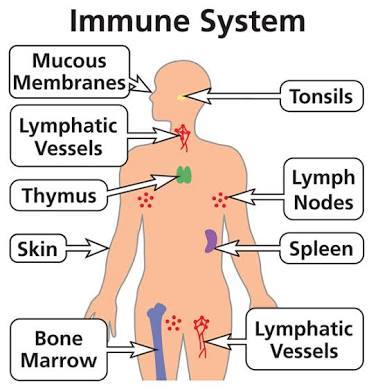
#greater noida#best homeo clinic in indirapuram#ghaziabad#homeopathy clinics#homeopathy doctor#homeopathy for ibs#best skin doctor in ghaziabad#homeopathy#homeopathy cold treatment in indirapuram#homeopathy medicine#laser treatment in indirapuram#skin specialist in indirapuram#homeopathy skin allergies treatment in indirapuram#homeopathy specialist in indirapuram#indirapuram#best homeopathy clinic in indirapuram#best homeopathy doctor#homeopathy skin allergies treatment in noida#homeopathy treatment#homoeopathy#ghaziabad latest news#best schools in ghaziabad#ghaziabadnews#ayurvedic doctor in ghaziabad#wave city ghaziabad#child doctor in noida#child specialist in noida#noida news#nursery school in greater noida#noida
6 notes
·
View notes
Text
Natural Care for Nose Allergies
Say goodbye to nasal irritation! Arogyam Ayurveda’s holistic nose allergy treatment offers effective relief through gentle, herbal care.

Why Choose Arogyam: • Personalized plans for symptom control • Time-tested Ayurvedic solutions for long-term health
Visit our website https://arogyamayurveda.com/allergic-rhinitus/ for more information.
#ayurvedicmedicine#allergist specialist#ayurvedic treatment for allergic rhinitis#nose allergy treatment#allergy doctor specialist#allergic rhinitis ayurveda treatment#ayurvedic medicine
0 notes
Text
Skin Allergy Home Remedy Treatment
Skin allergies are common issues that can cause discomfort and irritation. Skin Allergy Home Remedy Treatment. They occur when the skin reacts to allergens such as pollen, pet dander, or certain foods. Symptoms can range from mild itching to severe rashes and inflammation. Understanding the causes and symptoms is the first step towards finding effective remedies.

Common Types of Skin Allergies
Eczema (Atopic Dermatitis)
Contact Dermatitis
Hives (Urticaria)
Angioedema
Natural Remedies for Immediate Relief
Aloe Vera: Nature’s Soothing Gel
Aloe vera is a powerful plant known for its soothing properties. Applying fresh aloe vera gel directly to the affected area can reduce inflammation and itching. Skin Allergy Home Remedy Treatment. Its natural cooling effect provides instant relief from skin allergies.
Oatmeal Baths: Calming Itchiness
Oatmeal is an excellent remedy for itchy skin. Adding a cup of finely ground oatmeal to a warm bath can help soothe the skin. Soak in the bath for 15-20 minutes to experience the calming effects. This method is particularly effective for widespread rashes.
Coconut Oil: Natural Moisturizer
Coconut oil is known for its moisturizing and anti-inflammatory properties. Applying a thin layer of coconut oil to the affected area can help reduce dryness and itching. Skin Allergy Home Remedy Treatment. It also creates a protective barrier on the skin, preventing further irritation.

0 notes
Text

Effective Ayurvedic Medicine: Homeopathic Treatments and Remedies for Skin Allergies
Get effective Ayurvedic treatments for allergens on the skin in a natural way. Discover how to reduce allergy-related itching, inflammation, and discomfort by using herbs, treatments, and other natural remedies.
0 notes
Text
Ayurvedic medicine for skin allergies focuses on balancing the body's doshas and employs natural ingredients like neem, turmeric, and aloe vera to soothe and heal the skin, providing holistic relief from allergic reactions.
#Ayurvedic Medicine for Skin Allergy#ayurveda#ayurvedic#ayurvedic medicine#india#sushain#sushainclinic#ayurvedicdoctors#ayurvedic doctor near me#jiva#sushain clinic
0 notes
Text
Welcome to Aarogya Life, where our expert team, led by the Best Ayurvedic Doctor in Delhi and renowned Sexologists in Delhi NCR, is dedicated to holistic well-being.
0 notes
Text
DESCRIPTION
Established in 2014, Old Forest is one of the best Ayurvedic companies that offer a quality tested range of herbal medicines at cost effective rates. Their mission is rooted in a deep reverence for nature, and our commitment is to harness the natural power of herbs, traditional remedies, and holistic healing to enhance your health and quality of life
#Ayurvedic medicine DB-11 for diabetes#Ayurvedic medicine for diabetes#best herbal ayurvedic diabetes medicine#Best ayurvedic medicine for diabetes#best ayurvedic medicine for skin#Best Ayurvedic lotion for skin allergy#Best Ayurvedic Skin Care Medicine#best ayurvedic syrup for digestive problems#best ayurvedic medicine for gastric problem#Best ayurvedic medicine for digestive disorders#Best ayurvedic medicine for skin allergy
0 notes
Text
Detox your body with authentic ayurvedic panchkarm treatments.
Get rid of Pain, Arthritis, Spondylosis, Acidity, IBS, Constipation, Obesity, PCOS , PCOD, harmonal imbalance , Infertility, Low Sperms, stress, menopause ,diabetes, hypertension, vericose veins, digestive problems, allergy, asthma, cough, psoriasis etc.
Ayurvedic medicines are available for all kinds of health issues.
!! *हर घर आयुर्वेद* !!
!! *हर दिन आयुर्वेद* !!
#3, C1 Aster, Sai Baba Vihar Complex, Anand nagar, Ghodbander Road,
Near Muchhala college, Thane west.
Mob 9004616617
Location
https://maps.app.goo.gl/T14tb8UemrU3JCxz6
#jointpain #arthritistreatment #spondylosis #acidityproblems #IBS #constipation #obesity #pcos #pcodtreatment #harmonalimbalance #infertilitytreatment #lowspermcount #stress #menopause #diabetes #hypertension #digestiveproblems #vericoseveins #allergy #asthmaproblems #psoriasis #ayurvedicclinicnearme #ayurvedicmedicine #ayurvedicdoctor #ayurvedicclinic #drnarkhedeayurvedclinic #drsagarnarkhede

#ayurveda#drnarkhedeayurvedclinic#drsagarnarkhede#panchakarma#ayurvedic doctor#ayurvedictreatment#ayurvedicclinic#panchakarma treatment#ayurvedic medicine#ayurvedicmedicines#arthritistreatment#jointpain#allergy treatment#stomach pain#infertilitytreatment
1 note
·
View note
Text
What Makes Skin Allergy Ayurvedic Medicine A Good Choice?
Lately, the growing number of environmental pollution problems, stress, dietary changes, and heredity that may cause skin allergies in adults and children has increased tremendously, leaving us with an array of skin problems. Moreover, allergies occur due to the overreaction of our body's immune system to particular substances that sometimes become harmful and react indifferently. However, the holistic approach to get it rid of its root cause is Ayurveda. Skin allergy ayurvedic medicine can help you overcome its root cause. Read more: https://ext-6254570.livejournal.com/377.html

0 notes
Text
Bees and Honey 👇
🐝Some interesting facts about bees 🐝
Here are 20 interesting facts about the importance of honey and bees:
1. Did you know that honey never spoils? Archaeologists have found pots of honey in ancient Egyptian tombs that are over 3,000 years old and still perfectly edible!
2. Did you know bees are essential for growing many of our foods? They pollinate about one-third of the food we eat, including fruits, vegetables, and nuts.
3. Did you know honey has natural healing properties? It can help soothe sore throats and even speed up the healing of wounds and burns due to its antibacterial qualities.
4. Did you know bees produce a tiny amount of honey in their lifetime? A single worker bee produces only about 1/12th of a teaspoon of honey in her entire life, but together they make a lot!
5. Did you know bees communicate through dancing? They perform a "waggle dance" to tell other bees where to find the best flowers.
6. Did you know honey can help your brain? It contains antioxidants that may support brain health and improve memory.
7. Did you know beeswax, made by bees, is used in many everyday products?** It's found in things like candles, lip balm, and even some types of food packaging.
8. Did you know honey can be a natural energy booster? It provides a quick source of energy because it's packed with natural sugars.
9. Did you know there are over 300 types of honey in the United States alone? The flavor, color, and aroma depend on the flowers that bees visit.
10. Did you know that beekeeping helps many communities around the world? It provides income, supports agriculture, and helps improve food security in many regions.
11. Did you know honey can be used as a natural preservative? Because of its antibacterial properties, honey has been used to preserve fruits and other foods for centuries.
12. Did you know that some bees can recognize human faces? Studies have shown that honeybees can remember and recognize human faces, much like they remember different flowers.
13. Did you know honey can improve your sleep? A spoonful of honey before bed can promote relaxation and better sleep by raising insulin slightly and allowing tryptophan to enter the brain.
14. Did you know bees are colorblind to red? Bees can see ultraviolet light, which humans can't, but they can't see the color red. Instead, they see it as black.
15. Did you know honey can help with seasonal allergies? Consuming local honey is believed by some to help build immunity to local pollen and reduce allergy symptoms.
16. Did you know that royal jelly, produced by worker bees, is fed to all bee larvae? However, only those destined to become queens are fed royal jelly throughout their development.
17. Did you know honey has different medicinal uses in various cultures? For example, in Ayurvedic medicine, honey is used to treat digestive issues, and in ancient Egypt, it was used to treat wounds.
18. Did you know bees have a built-in GPS? They use the position of the sun, the earth's magnetic field, and their own memories of landmarks to navigate and find their way back to the hive.
19. Did you know honeybees are the only insects that produce food eaten by humans? They are unique in their production of honey, which has been a staple in human diets for thousands of years.
20. Did you know that honey can vary greatly in taste and texture? The type of flowers the bees pollinate affects the flavor, color, and texture of the honey. Some honey can even be creamy or spicy!
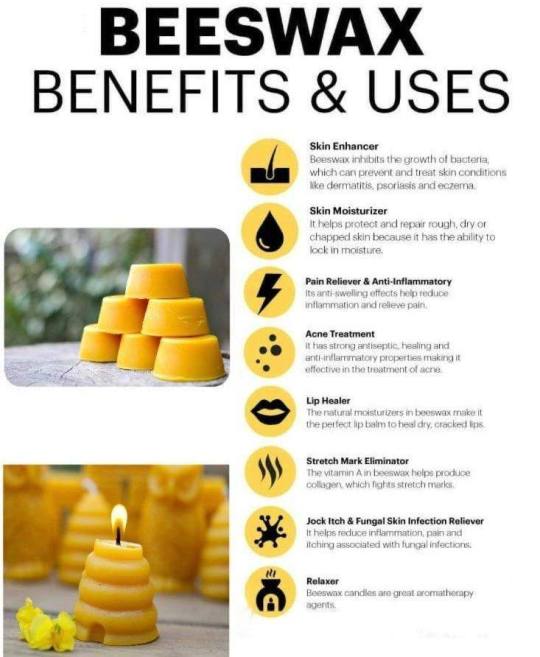
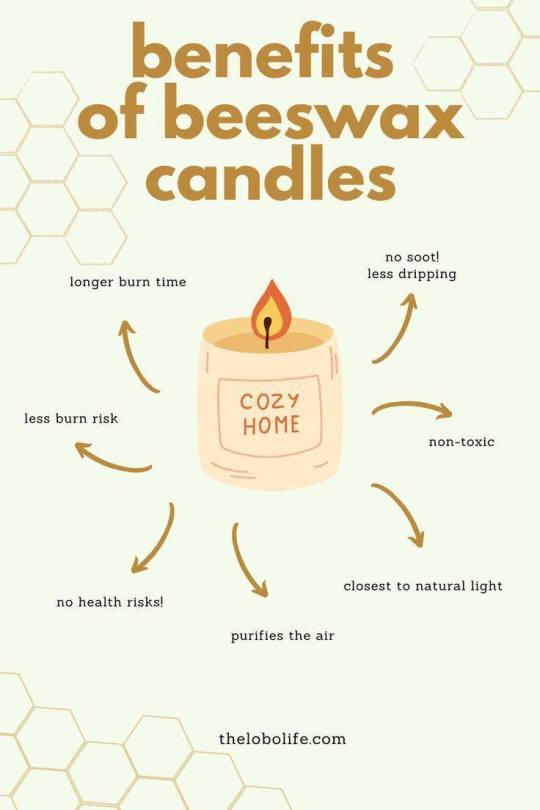
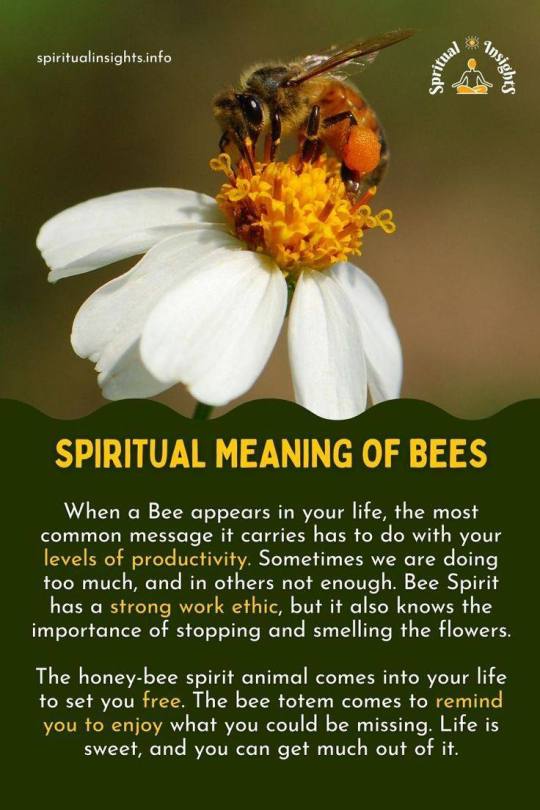
#pay attention#educate yourselves#educate yourself#knowledge is power#reeducate yourself#reeducate yourselves#think about it#think for yourselves#think for yourself#do your homework#do your own research#do some research#ask yourself questions#question everything#bees#honey#save the bees#nature#healing
199 notes
·
View notes
Text
*Dr. Smita Goel Homeopathy Clinic*
www.thehomeopathyclinic.co.in
A person with short stature, or restricted growth, does not grow as tall as other people of the same gender, age, and ethnicity. The person's height is below the 3rd percentile.
Short stature can be a variant of normal growth, or it may indicate a disorder or condition.
Growth rate is an important indicator of overall health. Children who do not reach the 5th percentile by the age of 5 years are said to be small for gestational age (SGA). A pediatrician will look out for signs of "failure to thrive."
Early intervention can prevent future problems in many cases.
Normally, at 8 years of age, a child's arm span is around the same as their height. If these measurements are out of proportion, this may be a sign of disproportionate short stature (DSS), sometimes known as "dwarfism."
Fast facts on short stature
Here are some key points about short stature. More detail is in the main article.
• Short stature can happen for a wide range of reasons, including having small parents, malnutrition, and genetic conditions such as achondroplasia.
• Proportionate short stature (PSS) is when the person is small, but all the parts are in the usual proportions. In disproportionate short stature (DSS), the limbs may be small compared with the trunk.
• If short stature results from a growth hormone (GH) deficiency, GH treatment can often boost growth.
• Some people may experience long-term medical complications, but intelligence is not usually affected.
Causes
Growth depends on a complex range of factors, including genetic makeup, nutrition, and hormonal influences.
The most common cause of short stature is having parents whose height is below average, but around 5 percent of children with short stature have a medical condition.
Conditions that can underlie short stature include:
• Undernutrition, due to a disease or lack of nutrients
• Hypothyroidism, leading to a lack of growth hormone
• A tumor in the pituitary gland
• Diseases of the lungs, heart, kidneys, liver, or gastrointestinal tract
• Conditions that affect the production of collagen and other proteins
• Some chronic diseases, such as celiac disease and other inflammatory disorders
• Mitochondrial disease, which can affect the body in different ways, including growth
Sometimes, an injury to the head during childhood can lead to reduced growth.
A lack of growth hormone can also lead to delayed or absent sexual development.
Rheumatologic diseases, such as arthritis, are linked to short stature. This may happen because of the disease, or as a result of the glucocorticoid treatment, which can affect the release of growth hormone.
Disproportionate short stature (DSS) usually stems from a genetic mutation that affects the development of bone and cartilage and undermines physical growth.
The parents may not have short stature, but they may pass on a condition that is linked to DSS, such as achondroplasia, mucopolysaccharide disease, and spondyloepiphyseal dysplasia (SED).
Types
There are different types and causes of short stature, or restricted growth, and they will present differently. Because the range of conditions is so broad, restricted growth can be classified in various ways.
One categorization is:
• Variant restricted growth
• Proportionate short stature (PSS)
• Disproportionate short stature (DSS)
Each of these categories includes a number of types and causes of short stature.
Variant restricted growth
Sometimes a person is small but otherwise healthy. This can be referred to as variant restricted growth. It may happen for genetic or hormonal reasons.
If the parents are also small, this can be called familial short stature (FSS). If it stems from a hormonal issue, it is a constitutional delay in growth and adolescence (CDGA).
The limbs and the head develop in proportion with the spine, and the individual is otherwise healthy.
Growth happens throughout the body, so the legs, for example, are in proportion with the spine.
In most cases, the individual's parents are also small, but sometimes small stature happens because the body does not produce enough growth hormone (GH), or the body does not process growth hormone properly. This is known as GH insensitivity. Hypothyrodism can lead to low hormone production.
Growth hormone treatment during childhood may help.
Proportionate short stature (PSS)
Sometimes, overall growth is restricted, but the person's body is in proportion, and the individual has a related health problem. This is known as proportionate short stature (PSS).
If the individual is heavy for their height, this can suggest a hormone problem. The problem could be hypothyroidism, excess glucorticoid production, or too little GH.
A person who is small and their weight is low for their height may be experiencing malnutrition, or they may have a disorder that leads to malabsorption.
Whatever the underlying reason, if it affects overall growth, it may impact development in at least one body system, so treatment is needed.
During adulthood, a person with this type of restricted growth is more likely to experience:
• osteoporosis
• cardiovascular problems
• reduced muscle strength
Rarely, there may be cognitive problems, or problems with thinking. This depends on the cause of the short stature.
Disproportionate short stature (DSS)
Disproportionate short stature (DSS) is linked to a genetic mutation. The parents are usually of average height. As with other types of short stature, a range underlying causes is possible.
An individual with DSS will be small in height, and they will have other unusual physical features. These may be visible at birth, or they may develop in time as the infant develops.
Most individuals will have an average-sized trunk and short limbs, but some people may have a very short trunk and shortened, but disproportionately large limbs. Head size may be disproportionately large.
Intelligence or cognitive abilities are unlikely to be affected unless the person has hydrocephalus, or too much fluid around the brain.
Achondroplasia underlies around 70 percent of cases of DSS. It affects around 1 in 15,000 to 1 in 40,000 people.
Features include:
• an average-sized trunk
• short limbs, especially the upper arms and legs
• short fingers, possibly with a wide space between the middle and ring fingers
• limited mobility in the elbows
• a large head with a prominent forehead and flattened bridge of the nose
• bowed legs
• lordosis, a progressive development of a swayed lower back
• average adult height of 4 feet, or 122 cm
Hypochondroplasia is a mild form of achondroplasia. It may be difficult to differentiate between familial short stature and achondroplasia.
Achondroplasia and hypochondroplasia result from a genetic mutation.
Genetic conditions, such as Turner syndrome, Down syndrome, or Prader Willi syndrome, are also linked to DSS.
Diagnosis
Some types of short stature can be diagnosed at birth. In other cases, routine visits to a pediatrician should reveal any abnormal growth pattern.
The doctor will record the child's head circumference, height, and weight.
If the doctor suspects restricted growth, they will carry out a physical examination, look at the child's medical and family history, and possibly carry out some tests.
These may include:
An x-ray, to assess for problems with bone development
An insulin tolerance test, to check for a deficiency in the growth hormone insulin-like growth factor-1 (IGF-1).
In this test, insulin is injected into a vein, causing blood glucose levels to drop. Normally, this would trigger the pituitary gland to release growth hormone (GH). If GH levels are lower than normal, there may be a GH deficiency.
Other tests include:
• a thyroid-stimulating hormone test, to check for hypothyroidism
• a complete blood count, to test for anemia
• metabolic tests, to assess liver and kidney function
• erythrocyte sedimentation and C-reactive protein tests, to assess for inflammatory bowel disease
• urine tests can check for enzyme deficiency disorders
• tissue transglutinase and immunoglobulin A tests, for celiac disease
• imaging scans, such as an x-ray of the skeleton and the skull or an MRI, can detect problems with the pituitary gland or hypothalamus
• bone marrow or skin biopsies may help confirm conditions associated with short stature
Treatment
Treatment will depend on the cause of the short stature.
If there are signs of malnutrition, the child may need nutritional supplements or treatment for a bowel disorder or other condition that is preventing them from absorbing nutrients.
If growth is restricted or delayed because of a hormonal problem, GH treatment may be necessary.
Pediatric hormone treatment: In children who produce too little GH, a daily injection of hormone treatment may stimulate physical growth later in life. Medications, such as somatropin, may eventually add 4 inches, or 10 centimeters, to adult height.
Adult hormone treatment
: Treatment for adults can help protect against complications, for example, cardiovascular disease and low bone mineral density.
Somatropin, also known as recombinant GH, might be recommended for people who:
• have a severe growth hormone deficiency
• experience impaired quality of life
• are already receiving treatment for another pituitary hormone deficiency
Adult patients generally self-administer daily with an injection.
Adverse effects of somatropin include headache, muscle pain, edema, or fluid retention, problems with eyesight, joint pain, vomiting, and nausea.
The patient may receive treatment to control chronic conditions, such as heart disease, lung disease, and arthritis.
Treatment for DSS
As DSS often stems from a genetic disorder, treatment focuses mainly on the complications.
Some patients with very short legs may undergo leg lengthening. The leg bone is broken and then fixed into a special frame. The frame is adjusted daily to lengthen the bone.
This does not always work, it takes a long time, and there is a risk of complications, including:
• pain
• the bone forming badly or at an inappropriate rate
• infection
• deep vein thrombosis (DVT), a blood clot in a vein
Other possible surgical treatments include:
• use of growth plates, where metal staples are inserted into the ends of long bones where growth takes place, to help bones grow in the right direction
• inserting staples or rods to help the spine form the right shape
• increasing the size of the opening in the bones of the spine to reduce pressure on the spinal cord
Regular monitoring can reduce the risk of complications.
Complications
A person with DSS may experience a number of complications.
These include:
• arthritis later in life
• delayed mobility development
• dental problems
• bowed legs
• hearing problems and otitis media
• hydrocephalus, or too much fluid in the brain cavities
• hunching of the back
• limb problems
• swaying of the back
• narrowing of the channel in the lower spine during adulthood and other spine problem
• sleep apnea
• weight gain
• speech and language problems
Individuals with proportionate short stature (PSS) may have poorly developed organs and pregnancy complications, such as respiratory problems. Delivery will normally be by cesarean section.
Outlook
Most people with short stature will have a normal life expectancy, and 90 percent of children who are small for their age at 2 years will "catch up" by adulthood.
The 10 percent who do not catch up are likely to have a condition such as fetal alcohol, Prader-Willi, or Down syndrome.
A person with achondroplasia can also expect a normal lifespan.
However, some serious conditions that are linked to some cases of short stature can be fatal.
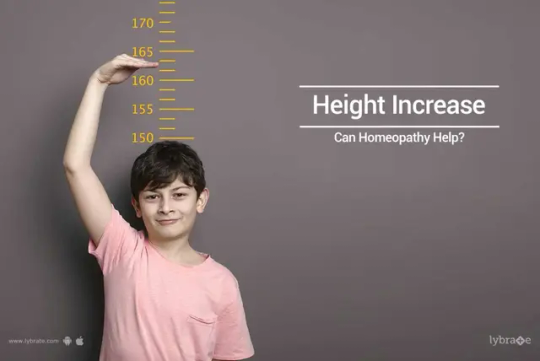
#greater noida#best homeo clinic in indirapuram#homeopathy for ibs#ghaziabad#homeopathy clinics#homeopathy cold treatment in indirapuram#homeopathy doctor#best skin doctor in ghaziabad#homeopathy#homeopathy medicine#best homeopathy clinic in indirapuram#best homeopathy doctor#homeopathy skin allergies treatment in indirapuram#homeopathy skin allergies treatment in noida#homeopathy specialist in indirapuram#homeopathy treatment#laser treatment in indirapuram#skin specialist in indirapuram#indirapuram#ghaziabad latest news#ghaziabadnews#best schools in ghaziabad#ayurvedic doctor in ghaziabad#wave city ghaziabad#greater noida west#child doctor in noida#child specialist in noida#noida news#nursery school in greater noida#noida
4 notes
·
View notes
Text
Nose Allergy Relief with Ayurveda
Tired of battling nose allergies? Arogyam Ayurveda provides specialized nose allergy treatment that soothes symptoms and restores balance naturally.

Why Choose Arogyam: • Safe, herbal solutions for every problem • Root-cause approach for lasting wellness.
Visit our website https://arogyamayurveda.com/allergic-rhinitus/ for more information.
#ayurvedicmedicine#allergist specialist#ayurvedic treatment for allergic rhinitis#nose allergy treatment#allergy doctor specialist#allergic rhinitis ayurveda treatment#ayurvedic medicine
0 notes
Text
1. Keep Skin Moisturized
Keeping your skin well-moisturized can prevent dryness and reduce the risk of allergic reactions. Use hypoallergenic and fragrance-free moisturizers. Skin Allergy Home Remedy Treatment

2. Wear Protective Clothing
If you know you'll be exposed to allergens, wear protective clothing to minimize skin contact.
3. Maintain a Healthy Diet
A diet rich in antioxidants and essential fatty acids can strengthen your skin's barrier and reduce inflammation. Skin Allergy Home Remedy Treatment Include foods like berries, nuts, seeds, and fatty fish in your diet.
4. Stay Hydrated
Drinking plenty of water keeps your skin hydrated and flushes out toxins that can trigger allergic reactions.
Visit for more - https://sifaayurveda.com/blog/skin-allergy-home-remedy-treatment/

0 notes
Text

Effective Ayurvedic Medicine: Homeopathic Treatments and Remedies for Skin Allergies
Experience natural relief from skin allergies with our Ayurvedic Medicine for Skin Allergy. Formulated using ancient Ayurvedic principles, our remedy harnesses the power of herbal ingredients to soothe and heal irritated skin. This potent blend targets the root cause of allergies, providing lasting relief from itching, redness, and inflammation. Free from harsh chemicals and synthetic additives, our Ayurvedic solution promotes healthy, clear skin through gentle, holistic care. Embrace the wisdom of Ayurveda and restore your skin's natural balance with our trusted Ayurvedic Medicine for Skin Allergy.
0 notes